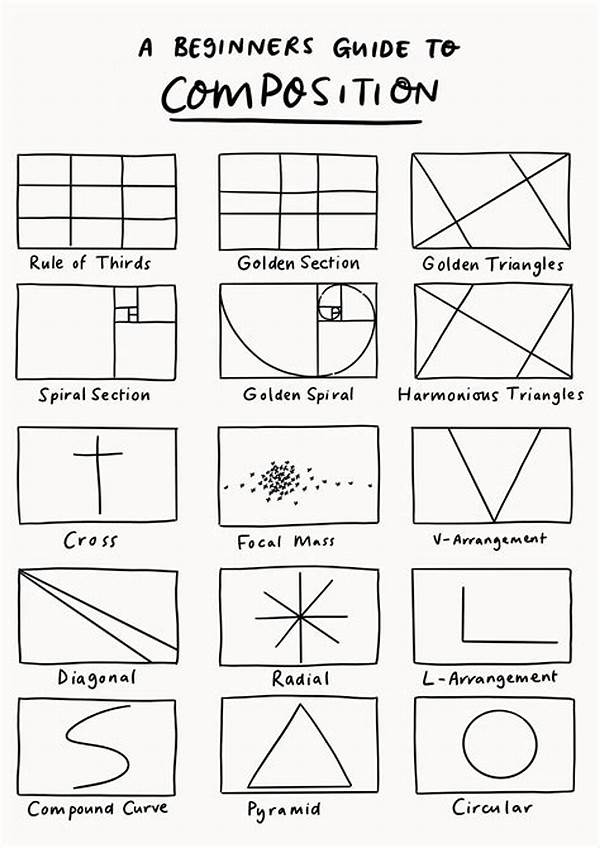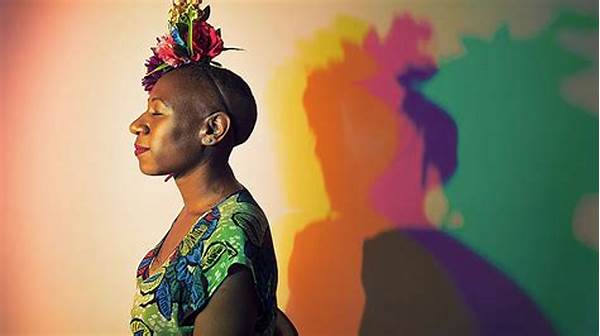Welcome to the world of photography! Whether you’re snapping pics with your smartphone or experimenting with a fancy camera, the art of photography is all about capturing moments in a way that’s visually pleasing. But here’s a little secret: great photos don’t just happen by accident. They’re often crafted using composition rules that bring out the best in each shot. So, if you’re a newbie looking to level up your photography game, buckle up! We’re diving into some fundamental photo composition rules for beginners. Trust me, these are gonna help you see the world through a new lens.
Read Now : Specialized Photoshop Workshops Online
Understanding the Basics of Photo Composition
When it comes to photo composition rules for beginners, the rule of thirds is your best friend. Imagine splitting your photo into nine equal segments by two horizontal and two vertical lines. The idea is to position the most important elements of your scene along these lines or at their intersections. This is because – fun fact – humans naturally gravitate towards these points in an image. It’s an easy yet powerful way to create balance and interest in your photos.
Another essential rule is leading lines, which are all about guiding your viewer’s eye through the photo. These could be anything from a winding road, railway tracks, or a row of trees. The aim? To draw attention to a specific part of your photo. By doing so, you create a path of vision that holds your audience’s gaze longer and makes the whole image much more engaging.
Let’s not forget about the importance of framing. Think of it as drawing attention to the subject by encasing it within something else in the photo, like an archway, branches, or even a window. This technique not only highlights your subject but also adds depth and layers to your image. With these fundamental pointers in your toolkit, you’re already on your way to mastering photo composition rules for beginners!
Essential Tips for Better Photo Composition
1. Rule of Thirds: It’s all about dividing your frame into thirds and placing your subject off-center for a more compelling shot. Top tip among photo composition rules for beginners!
2. Leading Lines: Use paths, roads, or lines to direct attention. It’s like a visual road map for your viewer.
3. Symmetry and Patterns: Break the monotony with a focus on symmetry or patterns. It adds rhythm to your photos.
4. Background Mindfulness: Watch out for distracting elements in the background. A clean backdrop can highlight your subject.
5. Depth Creation: Use foreground, middle ground, and background to add layers and create depth in images. This one’s a game-changer for photo composition rules for beginners.
Mastering Photo Composition with Practice
As you dive deeper into the world of photography, you’ll realize that mastering photo composition rules for beginners isn’t just about memorizing techniques. It’s also about practicing them until they become second nature. So, grab your camera or smartphone, and go on a photo hunt around your neighborhood. Hunt for interesting lines, unique perspectives, and captivating subjects.
The coolest part? The more you practice, the more intuitive it all becomes. You’ll start seeing scenes differently, automatically applying those rules without even thinking about it. Over time, you’ll develop your style and even learn when to break these rules for creative effect. It’s similar to learning how to dance; you start with basic steps, then improvise as you get comfortable.
Never forget that the essence of photography is storytelling. While technical skills are crucial, the thrill lies in conveying emotions and narratives through your shots. When you’re mindful of photo composition rules for beginners, you’re equipping yourself to tell these stories more vividly. So, keep clicking, and over time, you’ll find your unique voice in photography.
Advanced Concepts to Explore
1. Negative Space: Give your subject room to breathe with lots of space around it, making it pop.
2. Golden Ratio: Like the rule of thirds but more dynamic. Look it up, it’s fascinating!
3. Contrast for Focus: Use contrasting colors to make your subject stand out.
4. Balance Elements: When composing, make sure the weight of the image is evenly distributed.
5. Juxtaposition: Use contrasting elements for a startling visual effect.
Read Now : Innovative Image Enhancement Program
6. Natural Frames: Think archways or windows to frame your subject naturally.
7. Viewpoint Variance: Change your angle. Shoot from above, below, or through something to add intrigue.
8. Fill the Frame: Get up close and let your subject occupy the entire frame for impact.
9. Texture Inclusion: Add texture to make your photos tactile and dynamic.
10. Experiment with Light and Shadow: Play with lighting for mood and emotion—this separates amateurs from pros in photo composition rules for beginners.
Exploring Storytelling through Photos
The concept of storytelling is a pivotal element in photography and is inherently tied to photo composition rules for beginners. Ever glanced through photos that made you feel an array of emotions or prompted you to pause and think? That’s the power of storytelling. When you apply composition effectively, you’re not just clicking a button; you’re capturing a narrative, a moment in time that relays a story to your audience.
Consider a rain-soaked street: a lone umbrella, splashes of water, headlights reflecting off wet pavement—each element tells a story, one that’s incomplete without its counterparts. Mastering composition means organizing these elements within a frame to guide a viewer through the narrative you want to tell. This is why composition requires patience and creativity. Each photo is an opportunity to evoke feelings, share an experience, or even provoke a thought.
Photography isn’t merely about technical proficiency. Sure, technical knowledge is important—focus, exposure, aperture—but photo composition rules for beginners are about developing the creative side. It’s an open invitation to experiment and express. Only by honoring this aspect of photography can you evolve from simply taking pictures to actually making art. Grab your camera, dive into your surroundings, and let every photo you take be a chapter in your photography storybook.
Navigating the Learning Curve
So you’re diving into photo composition rules for beginners, huh? Awesome choice! Getting comfy with this stuff is like discovering a treasure chest for your photography skills. Trust me, the learning curve might seem steep at first, but stick with it—it’s worth every bit of effort!
The thing about composition is that it transforms the ordinary into something extraordinary. It takes practice and a dash of patience, of course. You’ll soon find yourself discovering patterns, noticing light changes, and appreciating small details. The world will start to look like one big canvas, waiting for you to capture it. The creative possibilities are endless, and that’s half the fun!
Remember, no photographer ever became a pro overnight. It’s all about shooting, failing, learning, repeating. Don’t stress about perfection; instead, enjoy the ride. Every photo you take, every mistake you make, leads to growth. So keep your camera handy, your lens clean, and your creative juices flowing. Before you know it, those photo composition rules for beginners will become second nature, and you’ll be crafting masterpieces left, right, and center.
Conclusion: Embracing Creative Freedom
In the end, understanding photo composition rules for beginners is about giving yourself the creative freedom to express your unique perspective. By grasping these rules, you’re setting yourself up for visual storytelling that resonates with your audience. From practicing the rule of thirds to leading lines, and from experimenting with light to playing with depth, each technique serves as a brushstroke on your photographic canvas.
Photography transcends just snapping pictures; it’s about seeing the world differently and sharing that vision through your lens. This makes mastering the basics of composition an integral part of your creative journey. So get out there, explore, and capture moments with intention and passion. The beauty of photography is that there are no bounds or limits; it’s a constant learning, evolving, and growing process.
Let these photo composition rules for beginners be your guide, but also remember to let your creativity roam free. With time, patience, and exploration, your unique style will emerge, and your photographs will truly speak volumes. So go on, embrace this exciting and limitless journey of photography. Happy shooting!



